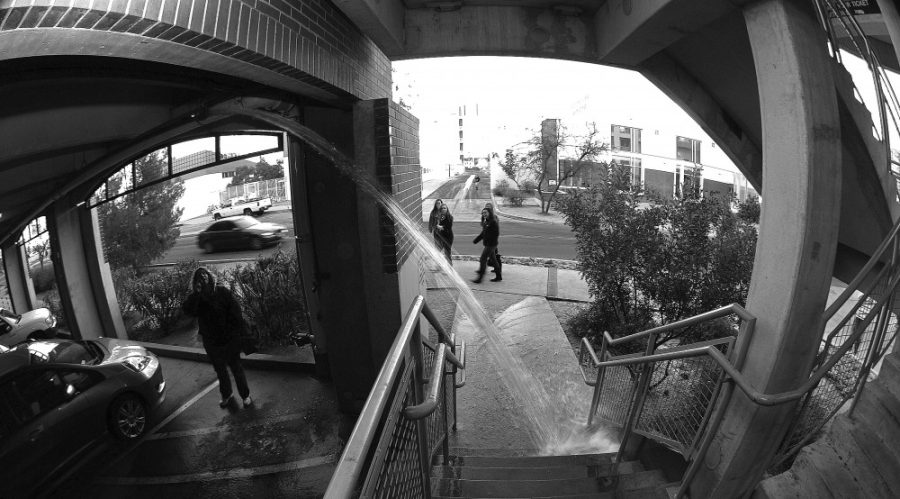The subzero temperatures that froze and busted building pipes across campus in early February caused more than half a million dollars in damage and took months to repair. Preventative measures will be fully in place by the end of the year to try and stop a second occurrence.
Damaged pipes created gas line pressure issues, disrupted water flow to buildings and caused indoor flooding, said Chris Kopach, assistant vice president of Facilities Management. Kopach said approximately 20 buildings across campus, including the College of Medicine, Henry Koffler building and the Learning Services building, were affected by freezing pipes.
“I’ve been doing this for 30 years and I never had a day like that,” Kopach said.
About 120 Facilities Management staff worked to clean up spills, repair lines and open ceilings to access the pipes. Kopach said all the buildings were kept functional and no classes were canceled.
“Unless it was your building, you didn’t know there was a problem until you read about it in the paper,” Kopach said.
Pipes that supply water to buildings and to the sprinkler system will receive an insulated sleeve around mid-December that will prevent them from freezing. Some fan coils, which are for the air conditioning system, already have heaters that prevent water from freezing in the coil. The rest will have them around mid-December. Preventative measures will cost more than $100,000 and buildings are being surveyed to see if they need them, Kopach said.
“We have a monsoon preparedness plan that we review every June. This deep freeze woke us up and made us realize we also have to prepare for the winter as well,” Kopach added.
The UA’s landscape also took a hit and some of it is probably beyond repair, Kopach said. Between 100 and 120 trees, some as old as 70, were damaged. Many of them were priceless, Kopach said.
“As we work with the insurance company, how do we price a tree whose seeds a professor brought back seven years ago from Africa for an experiment?” he said.
There’s 11 million square feet on campus and more than 350 buildings, which makes preventing every potential problem impossible, Kopach said.
“But we can work with the information we’ve gathered in the past,” Kopach said. “We can put the best measures in place to minimize damage and that’s our goal.”









